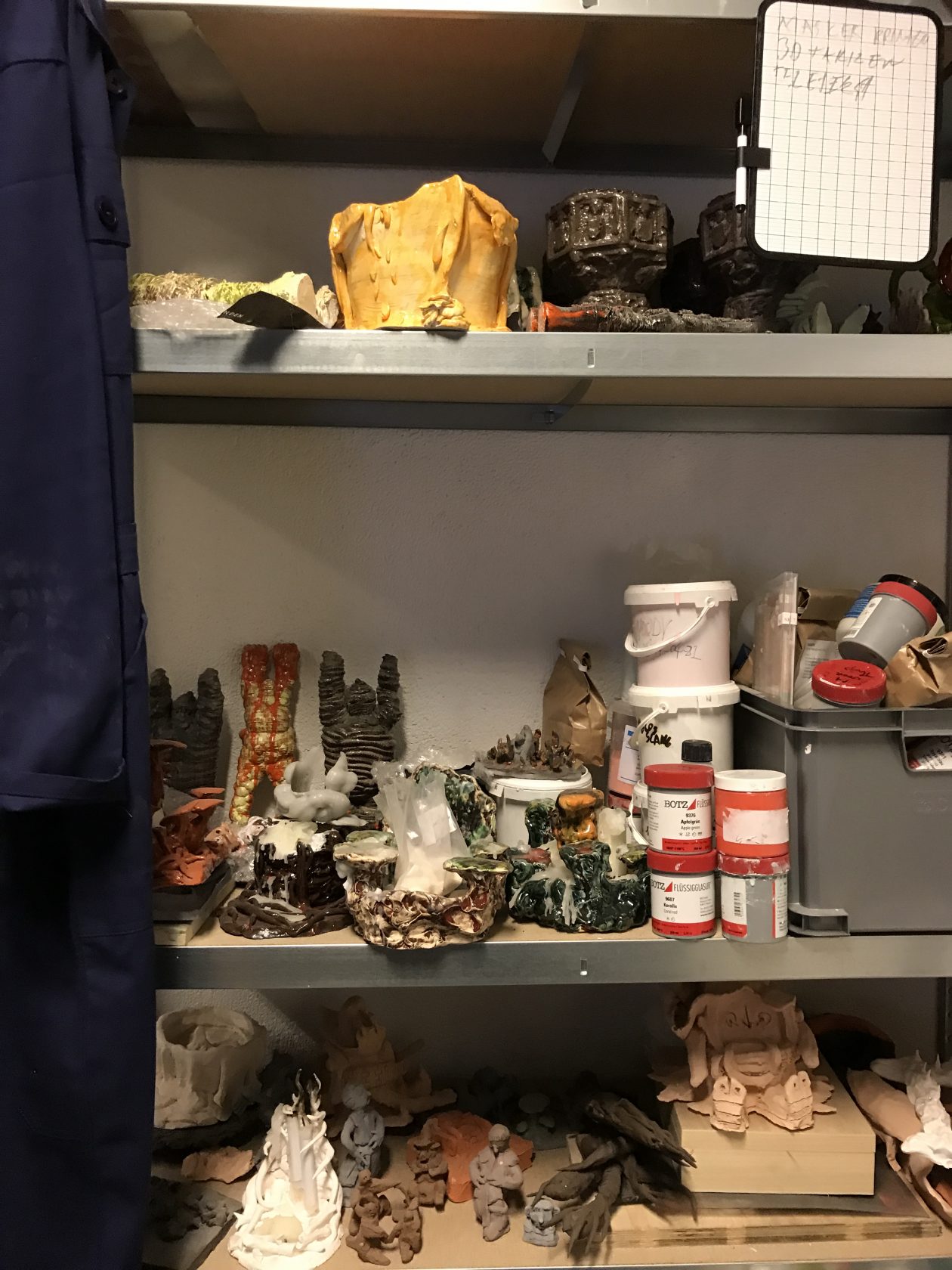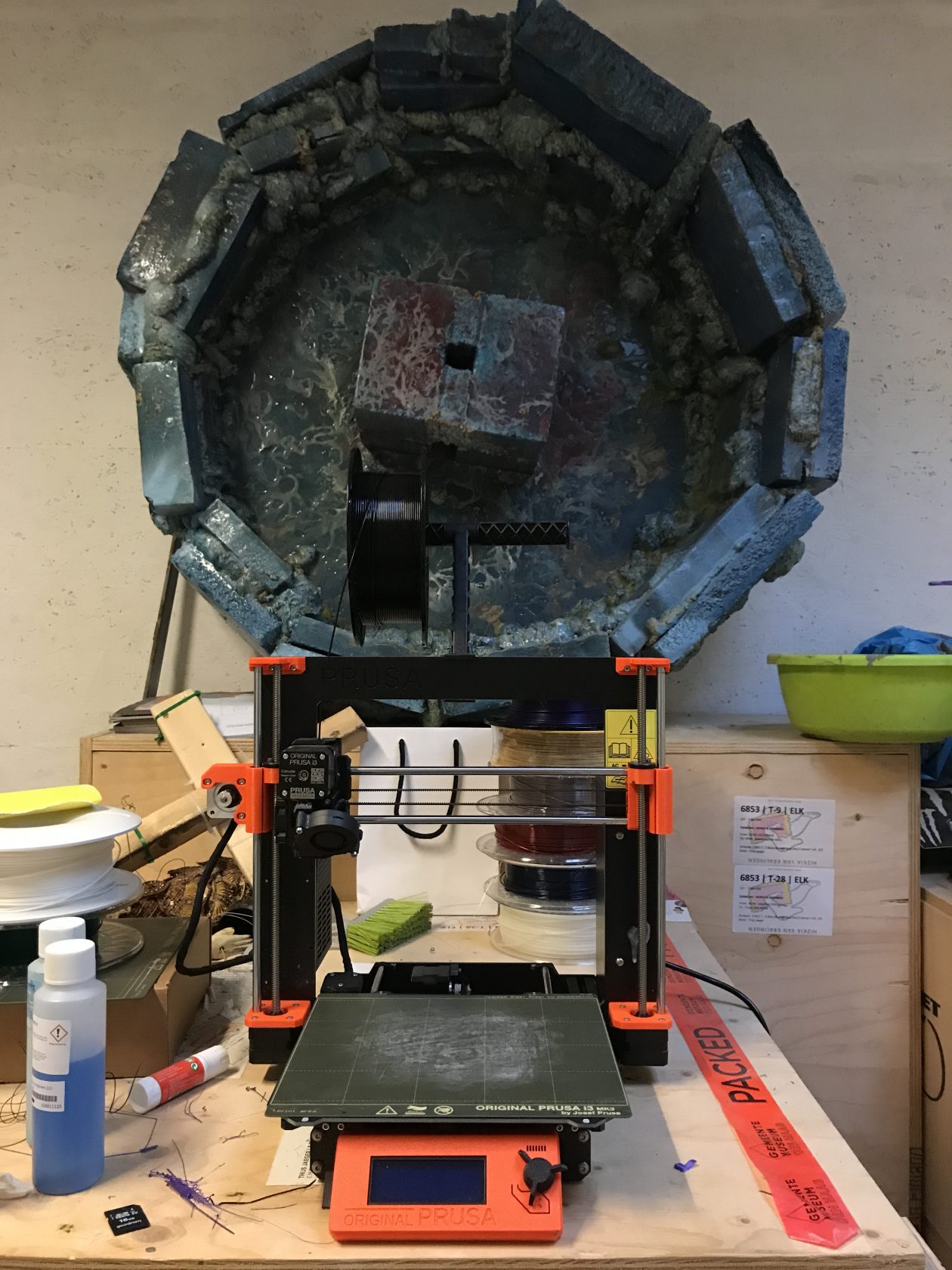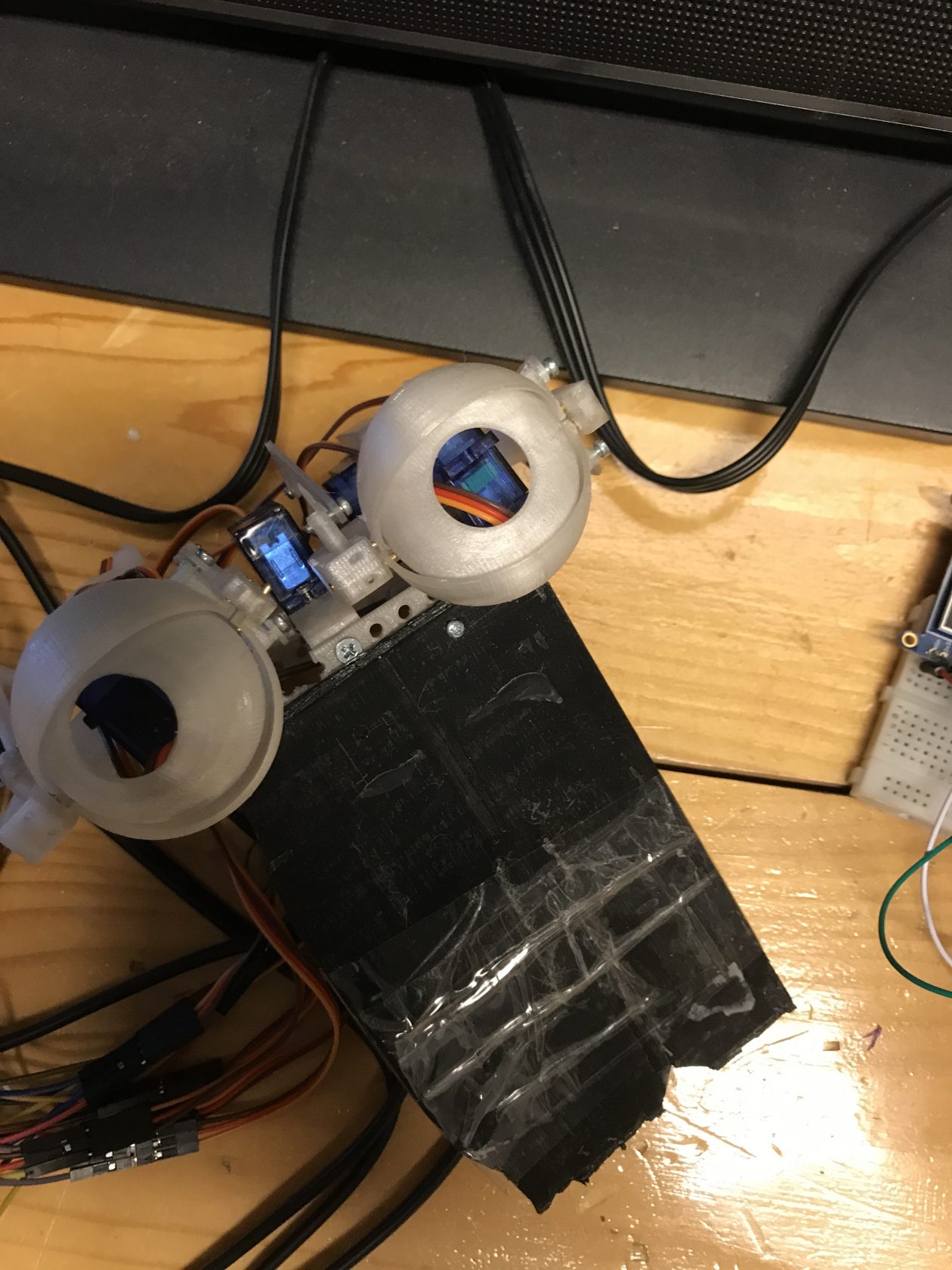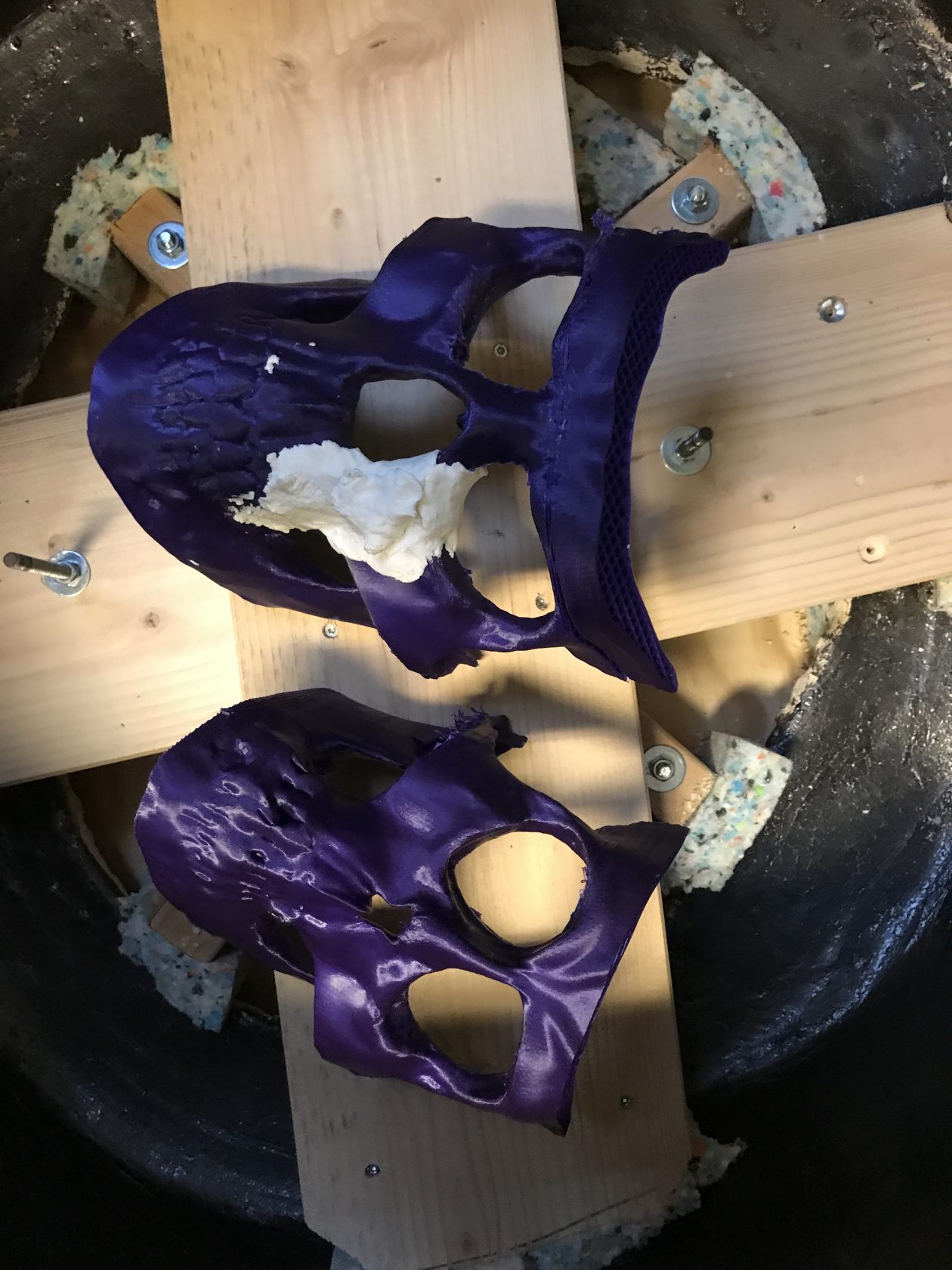Stroom invest interview / artist Thijs Jaeger
Meet artist and co-founder of Trixie artspace Thijs Jaeger, who like many of his generation grew up with internet, MSN, mobile phones and computer games. His artistic practice is a perfect relationship between this digital world and the physical one, combined with Thijs’ desire to tell stories.

Can you describe what you do?
I make sculptures and installations in a variety of materials, ceramics, video, electronics, 3Dprinting, teletekst. I combine religion, folktale and anecdotes that I found on the internet, I intertwine them and I weave them into the stories I want to tell.
Stories, myths, legends and folktales are at the core of my work. It can be booktales, but game fiction just as well. I’m fascinated by the idea of fables having an unknown author, and how they evolve in a same way my work does: there’s a starting point, and over time the work -or fable- changes and it becomes something that you could never have imagined.
Stories often have an intent for moral reflection and give something, like a warning or an insight, to people. Myths are a kind of reflection of the past on the future. I really like those kinds of elements, and I like working with them.
I wrote a text once about how Neanderthals lived in caves and when they came out of it, used everything they could find as some kind of tool. That’s how I see my work too, taking things that belong to someone else, stories I find on the internet from which the source is unknown, or objects, and secure them. That’s also how I use mythology in my work, I blend them together and mix them up because I think all those stories and folktales, religions even, are very similar to each other. I use it as a tool as well. Still all of my work does have its own unique signature.

I work with a lot of other people. When I come up with a new idea for a certain work or project, I need to talk about it, exchange thoughts, or ask someone for technical advice or to help me actually built it. It can be rather difficult, because I’m wondering to what extent would this still be my own authentic work, did someone add to it or change it? But in the end all those things are parts of a larger whole, they’re an extension of my work. The work goes through phases and processes; when someone else touched it, it feels like a change in the process for me. And I like that.
Right now I’m working on this new project based on Mimisbrunnr (Norwegian for Mimir’s well). It’s the story of Odin visiting the sacred worldtree Yggdrasil. Under the roots of the tree is a well of wisdom, so Odin wants to drink from the water. The creature Mimir is guarding the well and he allows Odin a drink in return for one of his eyes. He then takes Odins eye and puts it in so he becomes clairvoyant and can predict the future. At some point Odin wants Mimirs wisdom. He cuts off his head and puts it on his armor. Whenever Odin goes into battle, the head of Mimir is with him and advices him, tells him what to do, where to go or how to do it better. Mimir is like a tool to Odin now..
And that’s what this object is; the divine worldtree sawed off like a kind of stump, holding Mimirs head inside it. It’s made of ceramics and epoxy clay, with computerized eyes that I built myself, there are two small screens, and ‘roots’ growing through the entire object, branches in a 3D plastic print, wire interwoven into the ‘brain’… .
I’m connecting the story of Mimir to the idea of fake news. You see, the head of Mimir was cut off and so the head is missing its body, that what makes it whole and one. When the head of Mimir speaks, you’re missing the context, just like fake-news misses a context.
To me it’s about communication systems and connections; Odin, who is the supreme god, takes a source of information but cuts it off from the well, from its roots, the wiring, he cuts the connections making the head stand alone. Fake news is also disconnected from parts of the facts. Facts are pulled apart. It very much interests me.
I want to explain this idea more by using teletekst, through which the viewer can click like it’s a game story. It’ll be a massive installation, it really is my dreamproject.

What drives you to make work?
That’s a very difficult question. I’ve thought about it a lot and sometimes I wonder, what if I were on a desert island far away where I would have or own nothing, would I still be making art then? As a child I wasn’t into making art, it was years later that I really enjoyed doing it. In the start everything was a kind of joke, for instance I’d draw something very fast and indifferently. My attitude has become much more serious now. There’s still humour in my work which is a great motivation as well. I want to make things that tell something, telling stories is a part of me. It is the main reason I want to create.
But, honestly I very often think, Who am I doing it for? Your work could be on show in a museum, people see it and they think “What the fuck is this? Has this guy been dealing with this all his life?, Is he working on this eight hours a day…?” I’m doing all of this, putting so much time and energy into it, but I can’t earn enough money with it, I have to do other jobs in order to make a living. But I still do it because it gives so much satisfaction and a lot of peace. As an artist you’re able to do everything in your own way. For example the electronics I’m using, I don’t do those things by the book but I do everything on my own terms. It’s like playing like children do. I guess that is the best thing and most important motivation for making art.
Before I started at the art academy I studied at the Graphic Design lyceum, I mostly worked with video then, and at some point I wanted to be a documentary producer. But I was also very interested in becoming a digital detective, a sort of a hacker working for the good guys, investigating cyberwars and so on. I liked archaeology. And all those things make sense in what I’m doing now. I became all those things and interests and professions in one.

How would you like people to engage with your work?
A lot of art consists of aesthetics and politics; it either looks nice or it wants to speak out. I hope my work can have both, my work is aesthetic but I also have something to say. It is complex though, because you want to tell something and at the same time you want people to discover the work themselves, so you shouldn’t be saying everything you want… The dilemma is: what do you communicate and what do you want your audience to see for themselves, or for your work to unravel itself? I would like to have the work tell everything itself but it’s a tricky thing. People tend to look at a work of art for two seconds. There’s probably much more to discover in my work than two seconds can provide. I like small things hidden in bigger things, layers of meaning and communication, so people have to look closer, longer and more intense. Something grabs them and shakes them up, they’re challenged to think about it. I hope viewers understand that despite my work being aesthetically pleasing, there’s much more to it. And they will look for three seconds instead of two, haha.
Do you have anything exciting on the horizon?
The Mimirsbrunn work, that’s my big project now. I’ll have it finished this summer. I’m working on inserting teletekst in it, it’ll be like a game that guides you to the well, you can click your way through and participate by picking one of three options. One of the options being “yes, I give my eye and I may drink from the source”. You then become part of the fake news idea and you are completely absorbed in its stories. Teletekst is a great medium, it’s old, particularly Dutch, it’s actually like a premier version of Twitter. Before, you had to wait for the eight-o-clock news but this way you could immediately see the football results, for instance. I like that idea.
Also very exciting are the Art-S-Cool lessons I’m teaching, a project for children at primary school. We’re going to make ‘mysterious beasts’ together. First we’ll talk about what a beast would be and do and look like. What do the children think is important about their beast, what are its characteristics? Does it live alone or in a group, is it protective, distant, and so on. We’ll make a description of it, then start drawing it and finally translate the drawing into a three dimensional form using clay. It’s exactly like the way I work; I analyze lots of religions and myths that all tell one story, in itself. I hope to do the same with the children. They’ll come and visit my studio as well, that’s really nice.


What’s your connection to The Hague?
The Hague is a nice city to live in and it certainly offers opportunities. It’s an interesting idea to be living in the governmental capital as an artist, working in an anti-squat building like Trixie. It’s like you’re living in a kind of shadow of the State haha.
There are a lot of interesting art-places and initiatives in The Hague, but they operate as individual small islands. I would love to see more communication and connection between them. I sometimes think the art world has a huge talent for being mysterious, and for a lot of people art is just quite difficult. I don’t think it needs to be like that at all, it could be easier and more accessible. Perhaps it’s the artists attitude, making it all way too romantic. But it doesn’t suit the time we live in, it’s an outdated perception. I wish for the arts to relate more to the ordinary and every-day The Hague and its residents.
Stroom Invest Week is an annual 4-day program for artists who were granted the PRO Invest subsidy. This subsidy supports young artists based in The Hague to develop their artistic practice so that artists and graduates of the art academy can continue to live and work in The Hague. To give the artists extra incentive, Stroom organises this week consisting of studio visits, presentations and several informal meetings. The intent is to broaden the visibility of artists from The Hague through future exhibitions, presentations and exchange programs. Stroom Invest Week 2022 will take place from 7 to 10th of June.